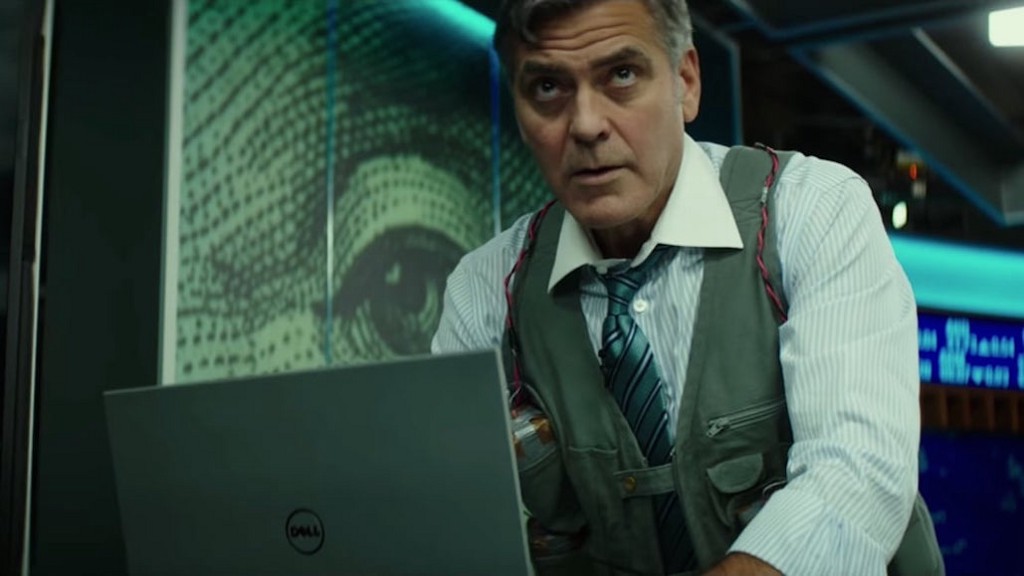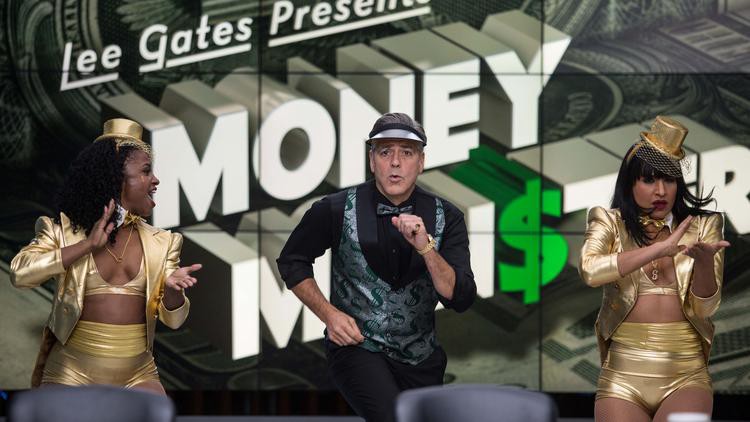‘Money Monster’ Review: The System Is Rigged, But So Is the Movie
Glitches, Google searches, and figuring out what’s going on 20 minutes before the characters do. (Mild spoilers ahead.)

I knew from the beginning of Money Monster that I would be disappointed.
I went in thinking it would actually be about our financial system, because I watched both the domestic and international trailers so many times and I saw Jack O’Connell put a gun to George Clooney’s head and say “My honest job pays me $14 an hour. How is that even fair?”
O’Connell’s character, everyman Kyle Budwell, keeps saying “the system is rigged!” but it turns out the movie’s what’s rigged; instead of looking carefully at our existing system, it sets up—can I spoil it for you? It’s in the first few minutes of the movie—it sets up this story about a stock that drops overnight due to a computer algorithm glitch.
To be fair, that isn’t a completely unrealistic scenario; take this 2010 story from the New York Times:
High-Speed Trading Glitch Costs Investors Billions
One official said they identified “a huge, anomalous, unexplained surge in selling, it looks like in Chicago,” about 2:45 p.m. The source remained unknown, but that jolt apparently set off trading based on computer algorithms, which in turn rippled across indexes and spiraled out of control.
Or this glitch from 2015:
Goldman Sachs to Pay $7 Million Penalty Over Options Glitch
The problem was caused by an error in the Goldman’s trading software that turned “contingent orders” for option trades into live orders and assigned them all a price of $1. The erroneous orders led others to submit orders to Goldman for stock option trades representing 150 million of underlying shares.
The S.E.C. said Goldman could have lost up to $500 million if the orders and trades were not later canceled by the exchanges, which treated most of them as erroneous orders.
But you can tell—again, first few minutes of the movie—that Money Monster isn’t going to take a serious look at stock trading algorithms. There’s a villain behind this glitch, and I am not spoiling anything because you can figure all of this out before George Clooney’s opening dance number.

Which meant I felt slightly cheated out of what I was hoping from Money Monster, which was to see George Clooney, Jack O’Donnell, and Julia Roberts discussing why it’s so hard for the middle and working class to get ahead, and the ways in which the system is in fact rigged to make the rich richer and the poor poorer.
Instead it’s a movie about a bad guy’s evil plan to make a lot of money, and a plucky TV crew who uncover the bad guy’s scheme only because Jack O’Connell says he’s going to kill them if they don’t. Nobody else in the movie is asking why the glitch happened. Nobody else is doing the basic research—like, Google-search level—to put the pieces together. You know from the very beginning that the glitch is not a real glitch, but nobody else does.
That was the other disappointing part of the movie. I love my Die Hard and Leverage and Sherlock just like the rest of us, and when those stories are told well you figure out what is going to happen either as the characters do or right before they do. You solve the mystery or catch the bad guy with them.
With Money Monster, you figure out what is going to happen 20 minutes before the characters do, and you have to wait for them to catch up.
Is it a terrible movie? Absolutely not. George Clooney as a charming-but-sleazy financial guru is not necessarily worth the movie ticket, but definitely worth watching when Money Monster hits the $3.99 Amazon rental.
Put it on during one of those nights when you want to relax and not have to think too hard.
Support The Billfold
The Billfold continues to exist thanks to support from our readers. Help us continue to do our work by making a monthly pledge on Patreon or a one-time-only contribution through PayPal.
Comments